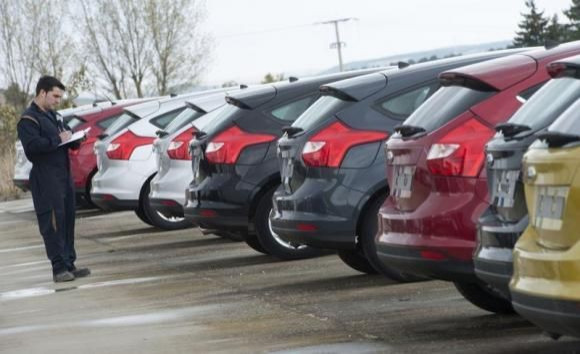European Car Sales Are Rising, But Relying On Discounts And Sales To Car Rental Agencies

Spurred by growing consumer confidence, low fuel prices and automaker discounts, new vehicle sales in the European Union increased in February at the fastest rate in 11 months. But the sluggish recovery from the debt crisis that struck the eurozone in 2009 isn’t expected to bring sales back to pre-crisis levels for years to come.
New vehicle registrations climbed 7 percent last month compared to February 2014, to 958,154, in the 28 European Union member states and its free-trade partners Switzerland, Norway and Iceland, according to data released Tuesday by the European Automobile Manufacturers Association.
"Conditions that are fueling the current growth have been at work for some time now, namely release of pent-up demand – particularly visible in those countries that experienced the biggest declines during the crisis,” Carlos Da Silva, manager of European light-vehicle sales for the market analytics firm IHS Automotive, said in an email. “Relatively speaking, today's situation is indeed much better than anything [automakers have] seen and been through during the past six years.”
Da Silva said sales were being propped up by “artificial support” from “tactical sales,” also known as fleet sales to auto rental agencies and dealerships – where cars are registered by companies rather than customers.
Economic confidence rose to a seven-month high last month as the European Central Bank announced it would soon begin a monetary stimulus. Low oil prices also helped draw customers to dealership lots, as did price cuts from Volkswagen’s popular Seat and Skoda brands.
Gains were helped by strong demand in Europe’s largest economies. In Germany and France, new-vehicle deliveries increased by 6.6 percent and 4.5 percent respectively. Italian and British sales jumped 13.2 percent and 12 percent. Spain saw the biggest jump among the region’s largest auto markets, 26 percent, as the government continued its scrappage program similar to the U.S. “Cash for Clunkers” program that spiked American car sales for a short period in late 2009 and early 2010.
While the region has started 2015 on a more positive note compared to recent years, the European car market has a long way to go.
“The European car market has been in a steady downtrend for a decade. Realistic observers with an eye on population statistics predict the EU market to stay in the doldrums for a long time,” says Bertel Schmitt of the Japanese auto blog Daily Kanban. “What is keeping the industry alive is the low euro. Car exports from Europe are good business. Car exports to Europe, not so much.”
© Copyright IBTimes 2024. All rights reserved.






















